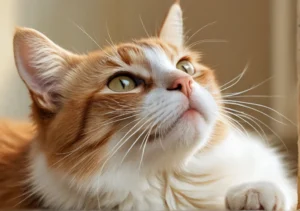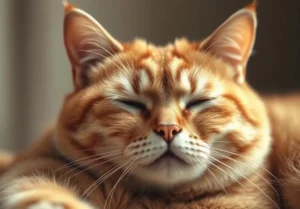Feral cats live shorter lives than their domesticated counterparts for various reasons. From harsh conditions to lack of access to veterinary care, these outdoor felines face numerous challenges that impact their longevity. In this blog post, we will explore the reasons why feral cats have shorter lifespans and what can be done to help improve their quality of life.
The Impact of Predation on Feral Cats
Feral cats face a constant threat from other animals, leading to a significant impact on their lifespan. Predation, whether from larger predators or competing feral cats, can result in fatal attacks that shorten their lives. With limited protection and safety measures in place, feral cats are vulnerable to becoming prey themselves. This constant risk of being hunted and attacked in their outdoor environment significantly contributes to their shorter lifespan compared to domesticated cats.
Lack of Food Sources and Nutrition
The scarcity of food sources for feral cats is a harsh reality that affects their overall health and longevity. Without a consistent and nutritious food supply, feral cats struggle to meet their dietary needs, leading to malnutrition and other health issues. This lack of proper nutrition not only weakens their immune system but also affects their ability to fight off diseases and infections. Inadequate access to essential nutrients can have a severe impact on the feral cat population, resulting in shorter lifespans and decreased overall well-being.
Unique Insight : Feral cats often rely on hunting for their food, which can be challenging in urban or densely populated areas where prey is scarce. This struggle to find adequate food sources further exacerbates their nutritional deficiencies and ultimately contributes to their shorter lifespan.
Remember, providing support and resources for feral cats, such as setting up feeding stations or working with local animal organizations, can make a significant difference in improving their health and quality of life. By addressing the challenges of predation and food scarcity, we can work towards helping feral cats live longer, healthier lives.
Exposure to Harsh Weather Conditions
Feral cats often face the unforgiving wrath of extreme weather conditions, which can take a toll on their health and shorten their lifespan. From scorching heat to freezing cold, these outdoor felines are constantly battling the elements. The intense heat of summer can lead to dehydration and heatstroke, while the bitter cold of winter puts them at risk of hypothermia. Over time, the cumulative effects of these weather extremes can weaken their immune system, making them more susceptible to illnesses and premature aging. Providing shelters or designated areas with protection from harsh weather can help mitigate these risks and improve the overall well-being of feral cat populations.
Health Risks and Disease Transmission
The lack of access to veterinary care for feral cats significantly increases the risk of disease transmission within their populations. Without vaccinations or medical treatment, these cats are more prone to infections, parasites, and other health issues that can drastically shorten their lifespan. Feral cats living in close proximity to each other create the perfect environment for diseases to spread rapidly. Common illnesses such as feline leukemia, distemper, and upper respiratory infections can decimate feral cat colonies, leading to high mortality rates. Implementing trap-neuter-return programs, providing regular veterinary care, and promoting responsible feeding practices can help reduce the transmission of diseases and improve the overall health outcomes for feral cats.
Additional Unique Insight:
In addition to disease transmission, feral cats face challenges in finding sources of clean water and nutritious food. This struggle for basic necessities further weakens their immune system and overall health, contributing to their shortened lifespan. Setting up managed feeding stations and ensuring access to fresh water can make a significant difference in the well-being and longevity of feral cat populations.
Importance of TNR Programs
Feral cats have a tough life on the streets, facing numerous threats that shorten their lifespan. This is where Trap-Neuter-Return (TNR) programs come in to save the day. TNR programs work wonders by trapping feral cats, neutering or spaying them, and then returning them to their colonies. This process not only helps control the feral cat population but also vastly improves their health and wellbeing. By preventing endless litters of kittens, TNR programs reduce the strain on resources these cats face while also avoiding many of the health risks associated with uncontrolled breeding. So, supporting TNR programs is a crucial step in ensuring that feral cats live longer, healthier lives.
Community Involvement and Support
When it comes to helping feral cats lead longer lives, community involvement is key. Communities play a vital role in creating a safer environment for feral cats by providing resources such as food, water, and shelter. By working together to address the needs of feral cats, communities can significantly improve the quality of life for these vulnerable creatures. Additionally, fostering a sense of compassion and understanding towards feral cats within the community can lead to increased support for initiatives aimed at their care and protection. Remember, every small act of kindness towards feral cats can make a big difference in extending their lifespan and improving their overall well-being.
Community Support Tips:
- Organize Trap-Neuter-Return (TNR) efforts: Get involved in or support local TNR programs to help control feral cat populations.
- Provide food and water: Set up feeding stations in safe locations to ensure feral cats have access to basic necessities.
- Build shelters: Construct simple shelters or provide insulated boxes to offer protection from the elements.
- Spread awareness: Educate your community about the importance of caring for feral cats and dispel myths or misconceptions.
Remember, feral cats depend on us for their survival, and with the right support and care from communities, we can make a significant impact in improving their quality of life and longevity.
The Importance of Spaying and Neutering
Spaying and neutering play a crucial role in feral cat populations, helping to reduce overpopulation and improve overall health outcomes. By spaying female cats and neutering male cats, population control becomes more manageable, preventing the exponential growth of feral cat colonies. This not only reduces the strain on available resources but also minimizes the spread of diseases within these communities. Furthermore, spaying and neutering can help increase the lifespan of feral cats by reducing the risks associated with mating behaviors, such as fighting and roaming in search of mates.
Here’s an additional unique insight: Research has shown that spaying and neutering can also help decrease the likelihood of certain types of cancers in cats, contributing to their overall health and longevity. It’s clear that the simple act of spaying and neutering can have a significant impact on the well-being of feral cat populations.
Interesting Fact: Feral Cat Colonies
Feral cat colonies operate with their unique social dynamics, often forming cooperative relationships within the group. These colonies can consist of related cats or individuals with established hierarchies that help maintain order within the community. Interestingly, feral cat colonies have been observed to display behaviors similar to domestic cat groups, emphasizing the importance of social bonds even in the wild.
If you want to learn more about the fascinating world of feral cat colonies, check out this helpful resource on how to support and manage feral cat colonies effectively: Resource on feral cat colony management.
Additional Resources for Feral Cat Care
If you’re passionate about helping feral cats live longer, healthier lives, there are plenty of resources and organizations that can guide you in the right direction. Alley Cat Allies is a fantastic starting point, offering a wealth of information on feral cat care and advocacy. They provide resources on Trap-Neuter-Return programs, which are crucial for controlling feral cat populations and improving their overall well-being.
Another great resource is The Humane Society of the United States, which provides tips on how to care for feral cats in your community. They offer guidance on building outdoor shelters, providing food and water, and monitoring the health of feral cat colonies. By getting involved with these organizations, you can make a real difference in the lives of feral cats and help ensure they have a fighting chance at a longer, healthier life.
Remember, every small effort counts when it comes to supporting feral cats. Whether it’s volunteering at a local shelter, donating supplies, or spreading awareness in your community, you can play a crucial role in improving the lives of these vulnerable animals. Take that first step today and become a voice for feral cats in need.
Here are some additional resources for feral cat care:
- Alley Cat Allies: Offers valuable information on Trap-Neuter-Return programs and feral cat advocacy.
- The Humane Society of the United States: Provides tips on caring for feral cats and improving their overall well-being.
- Best Friends Animal Society: Offers resources on community cat programs and supporting feral cat colonies.
- Feral Cat FOCUS: Provides information on managing feral cat populations and promoting humane solutions.
- Neighborhood Cats: Offers resources on Trap-Neuter-Return and establishing caretaker programs for feral cat colonies.
Don’t wait to make a difference in the lives of feral cats – get involved today and be a part of positive change for these special animals.
Alex, a passionate animal lover, has experience in training and understanding animal behavior. As a proud pet parent to two dogs and three cats, he founded AnimalReport.net to share insights from animal experts and expand his knowledge of the animal kingdom.




